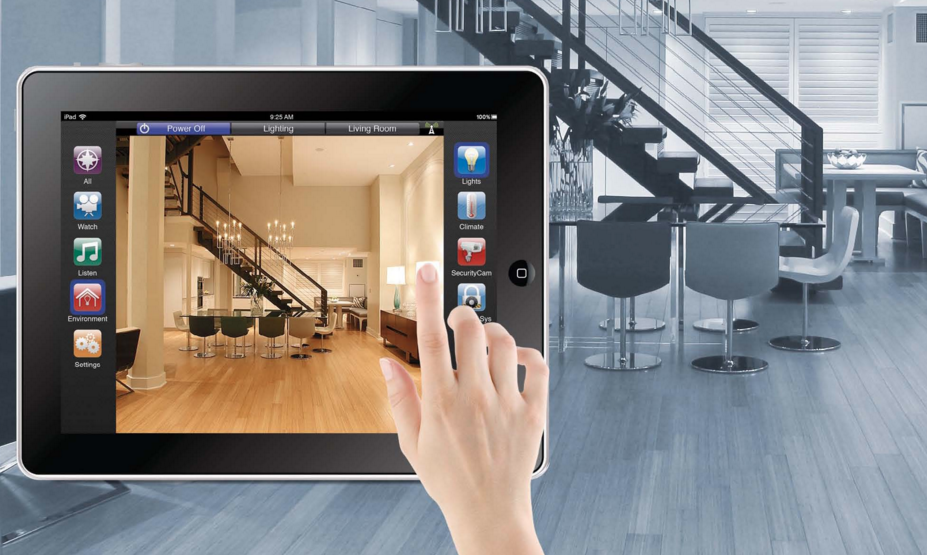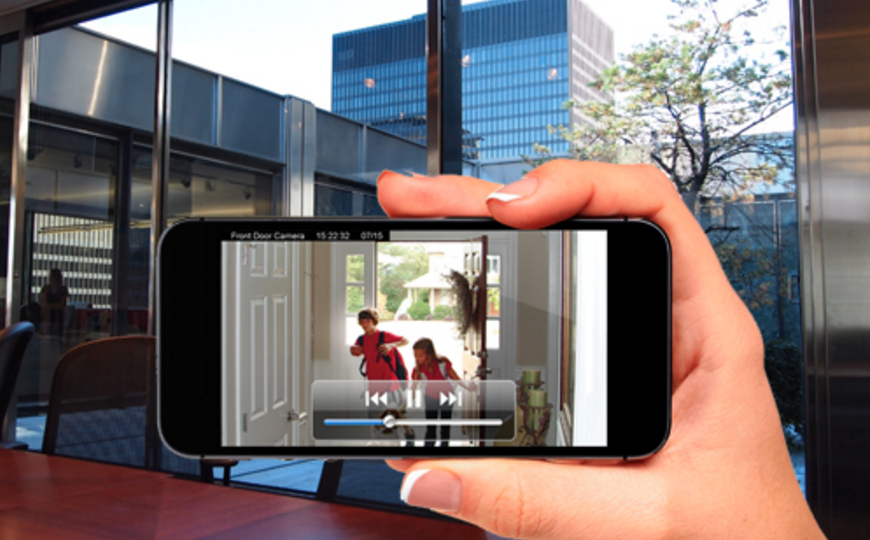
You’re leaving the office, and you want your house to be comfortable when you arrive home. Using your smartphone, you turn on the air conditioner so that when you walk in the door, the house is a perfect 70 degrees. Or maybe you want your sprinklers to turn on and water your lawn precisely when the grass needs it. Or turn on the stove to begin preheating for dinner . . . or any number of other automated tasks.
While many of these features might seem like something out of an episode of “The Jetsons,” they are completely possible with today’s automated technology. And while there is a certain “cool” factor associated with home automation, the real purpose is to make our lives easier while in many cases also reducing energy costs. With automation, our homes’ major systems and appliances operate at their optimal levels according to strict requirements, and can be controlled right from a main hub within the home or even from afar using a smartphone or tablet.
However, before we can begin having the lights dim at exactly 9 p.m. as a reminder to get ready for bed, there is great deal of technical planning and design that must go into the automation system.
From Sensors to Security
When developing home automation, there are a few key considerations to ensure that the device is not only useful to the consumer, but easy-to-use and safe.
Sensors. Those who offer smart home automation services near you probably understand the sensing requirements of the device and the user. That is how they usually determine the appropriate sensor for the task. Different environment and needs may require different sensors; for example, for dimmers, the sensors need to be equipped to detect light levels in the home to adjust automatically, while humidity sensors need to be able to detect the level of moisture in the environment to determine the appropriate response. The right sensor, when combined with a signal conditioner, processor, and code configured with a tool like MPLAB, will allow the device to determine the best course of action without user intervention.
System Architecture. Typically, home automation is controlled one of two ways: A central control unit or a room or individual control unit. A central control unit is essentially a hub that serves as the nerve center of the home automation system; it measures current conditions to control devices (like lights or thermostats) automatically. It can both control systems and devices based on time, or via instructions received by a remote user. This type of architecture consistently monitors the power state of appliances and makes decisions to turn them on or off based on predetermined settings. A room control unit may work in conjunction with the central control unit, or via a separate device, such as a remote control or on-device controls, such as on/off switches. Otherwise, the basic functions of the room control unit are similar to those of the central control unit.
Connectivity. One of the hallmarks of home automation is the ability to control the system and appliances remotely. While not all automated devices require this feature, for those that do, designers need to consider how users will be able to access the system remotely — and how the system can send alerts and notifications to users when necessary. The most common ways of doing so are using either a smartphone or the internet, which usually requires a serial communication protocol like SPI or I2C to communicate with the host processor. Device and system designers also need to consider local connectivity, so that central and room control units can communicate with each other as needed. This may happen via Bluetooth, radio frequency transmitters, XBEEs, or other protocols.

Power usage. Not only do designers need to consider the power usage of the device itself, and the power needs to operate the device, but they also need to think about what happens when there are fluctuations in the voltage of the home, such as power surges or outages. How will the devices respond to those fluctuations without being damaged?
Security. Finally, security is a major consideration in the automated home. The home automation system must be designed so the entire system is secure against unauthorized users. Some of the basic security measures include the ability to notify the homeowner should the system be tampered with or breached, encryption for data sent between devices, and the ability to password protect the devices.
These are only a few of the key considerations when designing a system and devices for an automated home. Cost, the level of automation, and clocks are some of the other important things to think about. However, when you put this level of thought into the designs, you have a better chance of creating a useful product that will impress your customers.

IntelligentHQ Your New Business Network.
IntelligentHQ is a Business network and an expert source for finance, capital markets and intelligence for thousands of global business professionals, startups, and companies.
We exist at the point of intersection between technology, social media, finance and innovation.
IntelligentHQ leverages innovation and scale of social digital technology, analytics, news and distribution to create an unparalleled, full digital medium and social business network spectrum.
IntelligentHQ is working hard, to become a trusted, and indispensable source of business news and analytics, within financial services and its associated supply chains and ecosystems.









